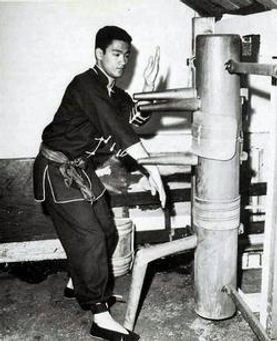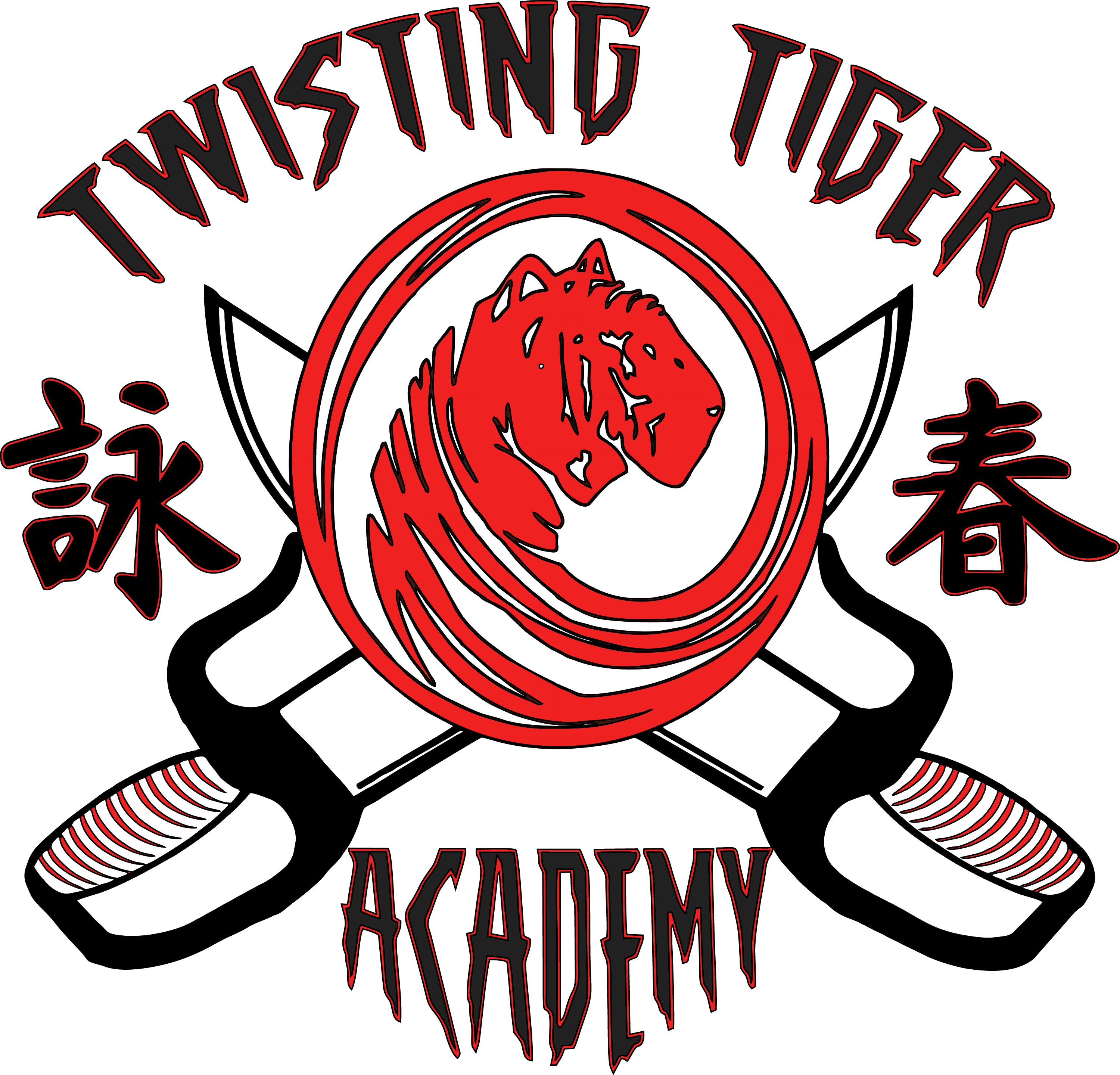
Real World
Self-Defense,
For Real People!

Wing Chun Keun






The Wing Chun curriculum taught at The Twisting Tiger Academy, is broken up into seven levels, with each level building upon the previous to help develop the student's skills and understanding of the fighting concepts and principles of the system. Each level has specific training drills, techniques, and applications that are taught, and the student must pass a test to demonstrate that they are proficient at a given level before they are allowed to proceed to the next. A very basic description of each level follows:
Sil Lim Tau
The first form in the system is Sil Lim Tau(little idea). All of the principles and the basic hand movements of Wing Chun are conatained within this form. There is is very minimal leg movements in the Sil Lim Tau; this form is used strenghen a persons foundation built from the core principles and techniques, all of which are necessary before progressing to any other level in the system.
Sil Lim Tau benefits:
-
Defines the centerline and teaches the proper hand positioning.
-
Teaches proper execution of all Wing Chun strikes.
-
Strongly reinforces elbow positioning.
-
Instills proper breathing and relaxation techniques.
-
Facilitates explosive force generation at a short range.
-
Increases speed, foundational strengh and focus.
-
Develop stong situational awareness.
-
Builds your Kung Lik (Internal energy)
Chum Kiu
Chum Kiu is a traditional open-hand form. It dates back to the Shaolin temple and the development of Wing Chun over two hundred years ago. Chum Kiu translates to “searching the bridge”. Chum Kiu consists of a variety of techniques and movements designed to bridge the gap to an opponent, hence the name, "Searching the Bridge". Chum Kiu also builds upon arm and leg movements learned in "Siu Lim Tau" to create a coherent fighting system. Chum Kiu also teaches advancing footwork, complex hand, leg and body movements.
Chum Kiu Benefits:
-
Develop dynamic balance and body movements.
-
Learn to synchronize oth hand and leg techniques.
-
Develop offensive and defensive use of spinning and shifting.
-
Develop various footwork for advancing faster to make combat more effective.
-
Maintain lighting speed without sacrifice of power.
-
Teaches how to close gaps during combat.
Muk Yan Jong (Wooden Man)
The Wing Chun wooden dummy is the most popular form of wooden dummy. A popular legend says it came about when 108 separate wooden dummies from the Shaolin Temple were combined into one by the nun Ng Mui to make training more efficient and effective. The Wing Chun wooden dummy uses an arm and leg configuration designed to cultivate fighting skill and chi simultaneously. The Hong Kong wooden dummy is a wall mounted version of the Wing Chun Wooden Dummy that hangs using two wooden slats through the body of the wooden dummy. Older versions of the Wing Chun wooden dummy were originally placed in the ground. The modern design was created by Ip Man in Hong Kong to fit the needs of living in an apartment. The Wing Chun version of the muk yan jong has three arms and one leg, which represents an opponent's body in various positions and the lines of force the body can give out.
Muk Yan Jong benefits:
-
Develop proper line of sight.
-
Develop ability to move around your opponent.
-
Develop razor sharp precision in your striking techniques.
-
Harden you arms and legs.
Lok Dim Boon Gwan
The authentic long pole form passed down by the late Grandmaster Yip Man is a rather short sequence containing the essentials for pole fighting. Unlike the many self-created versions, which consist of over 50 or even 70-plus movements, the true pole form is quite compact and focused on practicality. There are seven basic movements incorporated in the pole form which are identified by the following keywords:
Lok Dim Boon Gwan teaches:
-
Spear - A straight thrusting movement with the pole, usually targeting the throat or heart, making it a lethal attack.
-
Cover – This is often a circular movement that brings the attacker's pole down and sets him up for a follow-up strike.
-
Sideward Flick – A defensive movement, with the pole pointing upwards at a 45 degree angle.
-
Sweep – A defensive movement applied in either a forward or backward motion, which resembles the motion a pole man would use to steer a boat (junk). In this movement the pole is usually at a 60 degree angle with the ground.
-
Jerk-Up – A sudden upward snapping movement with the tail of the pole, bringing it from downward-pointing to an upward-pointing position. This is used when the opponent's pole is above our own, and can be used to disarm them.
-
Flip – A sudden downward snapping motion with the tail of the pole. In contrast to the Jerk-Up motion where the opponent's pole is above our own, the Flip movement is applied when our opponent's pole is below ours. As with the Jerk-Up, it is used to disarm the opponent prior to delivering a fatal strike.
-
Half-Fence – This is a defensive strike that relies on the strength of the arms and body. The name "Half-Fence" is derived from the mark left by the pole when striking a hanging piece of paper. Each of the 6 previous movements, when applied to strike a paper target, leave a round or oval hole, whereas the half-fence leaves a crescent or half-moon-shaped hole.
Because of the compact nature of the long pole form, it is not necessary to practice the form in such a large open area. There are no movements in the pole form which involve pointing the pole upwards at a 90 degree angle to the ground (which would require a high ceiling), swinging the pole 180 degrees (requiring a wide area) nor any movements using the head of the pole (i.e. the thicker end) for overhead windmill-like strikes. The deceptively short sequence of the pole form belies its extremely profound approach to weapons combat. There are no wasted movements, flashy twirls or fancy spinning movements. The Wing Chun pole is simple, direct and deadly this pole form consists of six and a half individual strikes, with the pole techniques striking very fast and powerful.
Every technique strikes directly toward the opponent with no wasted motion. The Lok Dim Boon Gwan utilizes a heavy long pole, typically between 8 1/2 to 9 feet in length, that tapers to a point on one end. But the techniques learned can easily be translated for application with virtually any long weapon, such as a staff or spear, or improvised weapons such as shovels or brooms. The training with the heavy pole used in Wing Chun helps to improve the stability of stances, body movements, thrusting power, and generally strengthens the fingers, wrists, arms, shoulders, and body.
Biu Gee
Biu Gee (Darting fingers) is characterized by the use of open hand techniques (as opposed to closed fist punches), and for this reason gains its name. The form teaches how to cut through the opponent's defenses if his Chum Kiu reactions are precise enough that the attacker cannot find a mistake in his defense to take advantage of. It also teaches how to regain and create a new centerline once it has been lost, and because of this is sometimes referred to as a set of "emergency techniques"; Bui Gee adds full-torso movements to the arm and leg techniques of the Siu Nim Tao and Chum Kiu forms.
Biu Gee Benefit:
-
Develops devastating striking power.
-
Combine singularly focused elbow, finger, and hand strikes with body rotation.
-
Trains the hands to return to the center if the centerline is lost or open.
-
Develop explosive tactical techniques such as foot sweeps and hidden strikes from beneath the elbow.
Bok Jom Dao
Butterfly swords are used in several Chinese martial arts, notably Wing Chun, Shaolin, Lau Gar and Hung Gar, but In Wing Chun it's one notable aspect of butterfly sword combat is that its principles are the basis for all other weaponry. In theory, any object that can be held in the hands of a Wing Chun practitioner will follow the same basic principles of movement as the butterfly swords. This is because the use of butterfly swords is simply an extension of empty-handed combat. The design of the weapon, including the crossguard shape, blade profile and blade length, are specific to each style of martial arts, the precise lineage, and individual. For example, some martial arts lineages flip the butterfly swords between the forward and reverse grip like a Sai, and consequently need a quillon that will fit the hand during a reverse grip. Some lineages trap the opponent's staff or blade between the quillon and spine, and they need a longer quillon closer and more parallel to the spine than would fit a hand after flipping. Some schools like a hybrid quillon design that is adequate for both flipping and trapping, but optimal for neither.


